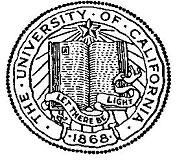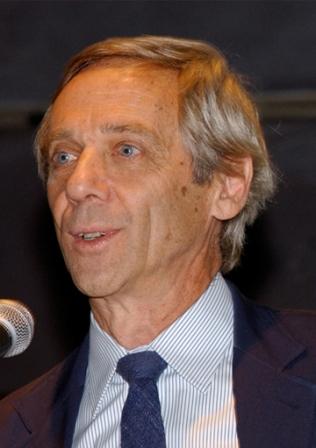

|

|
IN MEMORIAM
Donald C. Backer
Professor of Astronomy
UC Berkeley
1943 – 2010
Donald C. Backer, professor of astronomy and director of the Radio Astronomy Laboratory, died on Sunday, July 25, 2010, after collapsing outside his home. He was 66.
Don (as we and the worldwide community knew him) joined the University of California, Berkeley, Radio Astronomy Laboratory (RAL) as a research astronomer in 1975; since 1989, he held a joint position with the Department of Astronomy. This joint position was not just “in name only”: he contributed more than most faculty to course innovation and departmental welfare, then served as chair from 2002 to 2008. Immediately thereafter he became the RAL director and served until his death.
Born in Plainfield, New Jersey, on November 9, 1943, and raised in New Jersey, Don attended Cornell University and received a B.S. in engineering physics in 1966. He then attended the University of Manchester, where he completed an M.Sc. in radio astronomy in 1968 before returning to Cornell for further graduate studies, receiving his Ph.D. in 1971. After stints at the National Radio Astronomy Observatory and Goddard Space Flight Center, he came to Berkeley.
An innovative and visionary scientist, instrumentalist, and observer, Don worked in many areas of astronomy and was involved in numerous groundbreaking projects over his 40-year career. His research focused on pulsars, high-energy astrophysics, the epoch of reionization, and the exploration of these topics with the most imaginative and state-of-the-art instrumentation. His broad range of interests, active involvement in many fields, and fundamental work at the forefront of science and technology won him wide respect from knowledgeable astronomers worldwide.
Of particular note was his discovery of the first millisecond pulsar. Known previously as a radio source with the prosaic name “4C21.53”, this was a source with certain unusual properties that drew Don's attention and necessitated, to his keen mind, a pulsar. However, 4C21.53 had not been detected in pulsar surveys by other astronomers. Don realized this could only mean that the pulsar was much faster than could be covered by the standard surveys. Following his unassailable path of logic and his conviction, he pushed the pulsar measurement technique to shorter and shorter periods until finding, indeed, that it was a pulsar rotating with the unprecedentedly short period of 1.56 milliseconds—a neutron star spinning close to its breakup speed. Its name as a pulsar became PSR 1937+21. This discovery was sensational because fast pulsars, with the strong magnetic fields characteristic of most neutron stars, slow rapidly because of their electromagnetic radiation. The discovery of this fast pulsar, with a relatively weak magnetic field, revealed a unique new class of objects and revitalized pulsar research. Millisecond pulsars were quickly proposed to be the end products of accreting X-ray binaries; Don's pulsar 1937+21 is one of the rare ones that managed to destroy or abandon its companion.
Don had many other fundamental ideas and discoveries to his credit. He developed an important use for the new class of millisecond pulsars, which are rotationally stable and make very precise clocks, as a probe of the gravitational wave background. Dozens of researchers around the world are in active pursuit of the discovery, characterization, and use of millisecond pulsars for the detection of gravitational waves and, in particular, the characterization of those waves as revealing fundamental mass interactions in the cosmologically distant Universe. Don invented and developed digital systems for the detection and precise measurement of pulsars, and they have been adopted as standards in the field and are used at the major observatories worldwide.
Don was a pioneer in Very Long Baseline Interferometry (VLBI), a technique that links together, via magnetic tape, distant radio telescopes to produce high-resolution images, allowing the investigation of astronomical structures with microarcsecond angular resolution. In the 1980s he linked the RAL's 85-foot centimeter-wave telescope to a number of similar antennas distributed across the country and the world. This led to the formation of a national consortium of radio observatories, which Don led for several years. This consortium pioneered the development of accurate position measurement using radio astronomy and the concomitant study of terrestrial plate motions. He continued by pursuing ever-increasing resolution at shorter wavelengths. Pushing VLBI to the technically difficult mm-wavelengths, Don and his colleagues made the highest resolution image ever of the black hole located at the galactic center, an image that reveals scales close to the event horizon of the black hole.
In the past few years, Don initiated a unique “telescope” that consists of an array of antennas spread over pastureland to detect intergalactic hydrogen that is affected by the first stars and galaxies that formed in the universe. This Precision Array To Probe the Epoch of Reionization (PAPER) led to two prototype deployments, one in Green Bank, West Virginia, and one in South Africa. Despite starting on a small scale and fabricating all of the equipment from scratch, this project is now recognized internationally, among other new telescopes of its ilk, as being “firstest with the mostest”: the optimum combination of forefront technology and economy of design. Among other efforts, which emphasize size and complexity, Don's collaborators using PAPER alone are currently obtaining data and moving forward beyond the prototype stage.
Throughout his career, Don involved students in all aspects of his research. Interactions with students were a source of great enthusiasm and delight for him. Despite his many commitments and obligations, Don always had time for them and would visibly brighten when a student walked through the door to ask a question or solicit advice. Don pioneered many new directions in radio astronomy, and it is a mark of his vision, his generosity, and his commitment to developing young scientists that all of Don's major projects were ultimately handed to his students to be carried forward. Many of Don's former students became world astronomy leaders in their own right, which pleased Don tremendously.
Radio astronomy has progressed by combining the talents of those who build detector electronics, thoughtful leaders who patiently organize the building and sharing of telescopes, and scientists with a nose for identifying projects that are likely to yield great discoveries. Don was one of those rare individuals who combined all three of those talents into a single, modest, and personable human being. Don’s pioneering contributions to observational astronomy and innovations in radio astronomy instrumentation were recognized in 2003 when he received the Jansky Prize, one of the two highest achievements for a radio astronomer.
As RAL director, Don was deeply engaged in the laboratory's two major facilities, the Allen Telescope Array (ATA) and the Combined Array for Millimeter Astronomy (CARMA). Fostering the growth of three unique radio telescopes—ATA and CARMA, as well as PAPER—he was leading efforts to cover a factor of 1000 in wavelength range, promising a bright future for the RAL and the entire set of subfields of radio astronomy. At UC Berkeley, Don's colleagues and former students remember him not only for his valuable research and technical accomplishments, but also for his relentless energy, deep passion for science, and as someone who cared greatly for the people around him.
In addition to his wife, Susan Backer of Berkeley, Don is survived by his son, David of Rockville, Maryland; his mother, Lura Backer of Bradenton, Florida; and a niece, a nephew, and a granddaughter. His father, Phillip Backer, died in 1998 and his brother, Ken Backer, in 2007.
The Department of Astronomy
2011